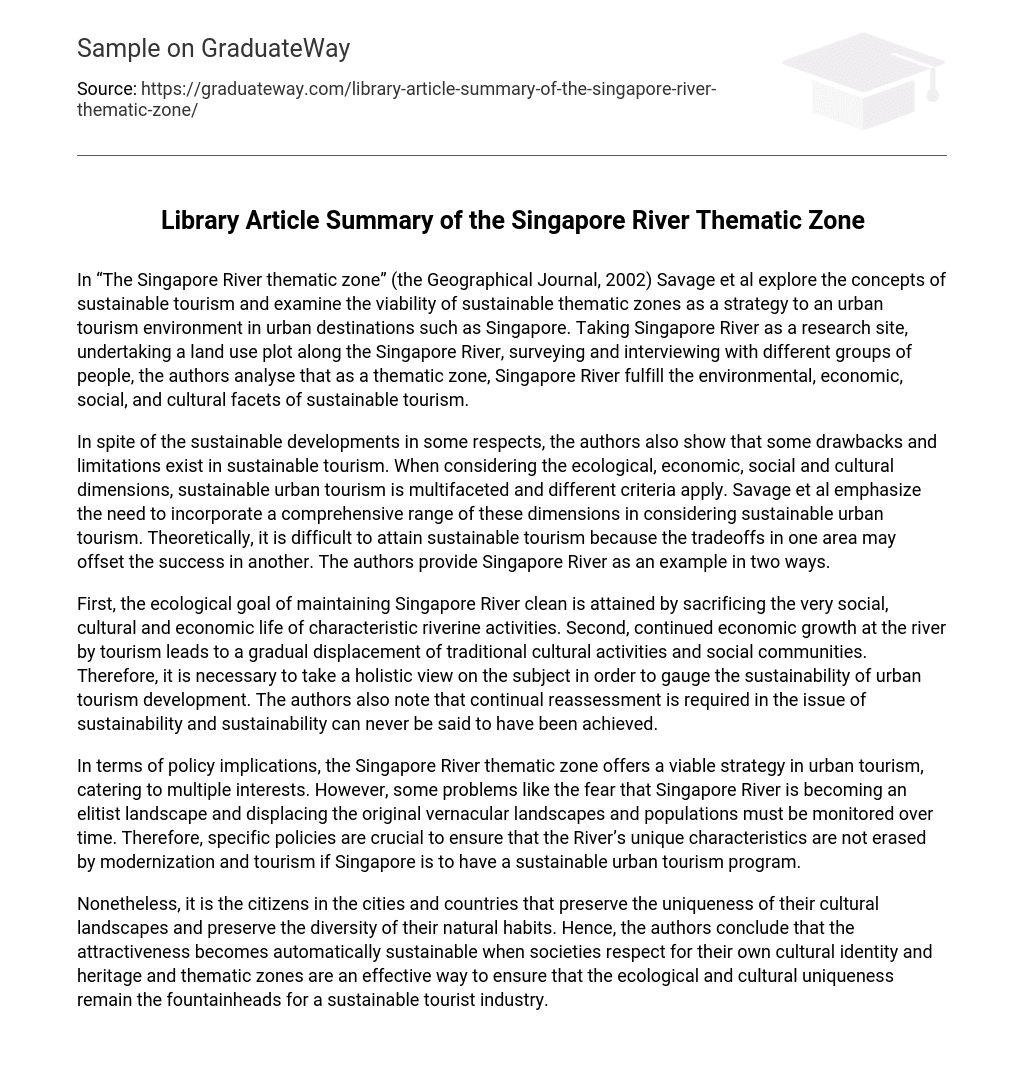In “The Singapore River thematic zone” (the Geographical Journal, 2002) Savage et al explore the concepts of sustainable tourism and examine the viability of sustainable thematic zones as a strategy to an urban tourism environment in urban destinations such as Singapore. Taking Singapore River as a research site, undertaking a land use plot along the Singapore River, surveying and interviewing with different groups of people, the authors analyse that as a thematic zone, Singapore River fulfill the environmental, economic, social, and cultural facets of sustainable tourism.
In spite of the sustainable developments in some respects, the authors also show that some drawbacks and limitations exist in sustainable tourism. When considering the ecological, economic, social and cultural dimensions, sustainable urban tourism is multifaceted and different criteria apply. Savage et al emphasize the need to incorporate a comprehensive range of these dimensions in considering sustainable urban tourism. Theoretically, it is difficult to attain sustainable tourism because the tradeoffs in one area may offset the success in another. The authors provide Singapore River as an example in two ways.
First, the ecological goal of maintaining Singapore River clean is attained by sacrificing the very social, cultural and economic life of characteristic riverine activities. Second, continued economic growth at the river by tourism leads to a gradual displacement of traditional cultural activities and social communities. Therefore, it is necessary to take a holistic view on the subject in order to gauge the sustainability of urban tourism development. The authors also note that continual reassessment is required in the issue of sustainability and sustainability can never be said to have been achieved.
In terms of policy implications, the Singapore River thematic zone offers a viable strategy in urban tourism, catering to multiple interests. However, some problems like the fear that Singapore River is becoming an elitist landscape and displacing the original vernacular landscapes and populations must be monitored over time. Therefore, specific policies are crucial to ensure that the River’s unique characteristics are not erased by modernization and tourism if Singapore is to have a sustainable urban tourism program.
Nonetheless, it is the citizens in the cities and countries that preserve the uniqueness of their cultural landscapes and preserve the diversity of their natural habits. Hence, the authors conclude that the attractiveness becomes automatically sustainable when societies respect for their own cultural identity and heritage and thematic zones are an effective way to ensure that the ecological and cultural uniqueness remain the fountainheads for a sustainable tourist industry.





